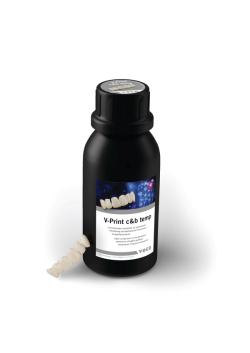- About Us
- Advertise
- Editorial
- Contact Us
- Terms and Conditions
- Privacy Policy
- Do Not Sell My Personal Information
© 2025 MJH Life Sciences™ and Dental Products Report. All rights reserved.
The Right Stuff: Esthetics and Durability Take Precedence When Choosing Dental Materials
The Dental Products Report® 2022 Materials Survey asked dental professionals what materials they were grabbing every day in their practice for restorative works, and their answers paint a clear picture of the industry.
Choosing the right material for the dental practice comes down to factors such as enhanced esthetics, durability, and the ever-important clinical research supporting the material. As materials become more advanced and evolving chemistry allows better outcomes, dental professionals can choose from a wider pool of materials for restorations.
The Dental Products Report® 2022 Materials Survey asked approximately 100 dental professionals what materials they were grabbing every day in their practice for restorative works. Their answers offered insight on what materials work, how often they get used, and when certain materials may work more effectively than others. Demographically, about 80% of respondents were practice owners with more than 20 years’ experience. Read on to see their answers and gain some valuable insight into what materials work for the modern dentist.
Material Selection Has Changed Since Last Year
Looking at answers to this series of questions over the years has offered some interesting insight into material selections. For instance, last year in the 2021 Materials Survey, regarding choosing a primary material for direct posterior restorations, about 50% answered in favor of universal composites and 30% answered in favor of bulk-fill composite. This presents an interesting shift, because this year those 2 types of material sit almost evenly in terms of being used for direct posterior restorations. Material choices seem to have stayed relatively like last year’s, with universal composite being the most used and amalgam the least used. Crown materials have remained consistent as well, with zirconia being the front-runner.
[ Research is a Deciding Factor ]
These survey results allow a closer look into what matters most to clinicians when choosing which materials to purchase for the practice. As usual, enhanced durability and esthetics rank high, but a new question to the survey this year demonstrates the concept and importance of research. Clinical research supporting material efficacy ranked high among the deciding factors. This perhaps says that clinicians want to know that the product they are using is valuable, and they want to see research to back that up. Almost 90% of respondents emphasized the importance of clinical research in this regard.
[ Trying New Things ]
Survey results indicated that respondents are taking the time to try new materials in the practice, with more than half answering that they are trying new things monthly if not more often. With new materials advancing with technology it comes as no surprise that clinicians are trying out these new products.
[ Keeping Well-Stocked ]
Respondents said they had different materials in stock. More than half said they had at least 2 different types of materials in stock for a variety of different restorative procedures. With a range of composites, glass ionomers, resin cements, adhesives, primers, and liners, it may be worthwhile to keep a good stock for everyday use in the practice.
[ Research Remains Key ]
These results align with 2021’s well with most respondents answering that they preferred to research a material before purchasing for their practice. These were followed by about 21% saying that they were early adopters for new materials to see what works best. Last year, about 5% of respondents answered that they rarely tried or adopted new materials, and this number has gone down to about 2% this year. This may show a trend of clinicians reaching out more to try new materials as the market expands and technology allows for a greater variety of products.

 Download Issue: Dental Products Report May 2022
Download Issue: Dental Products Report May 2022

